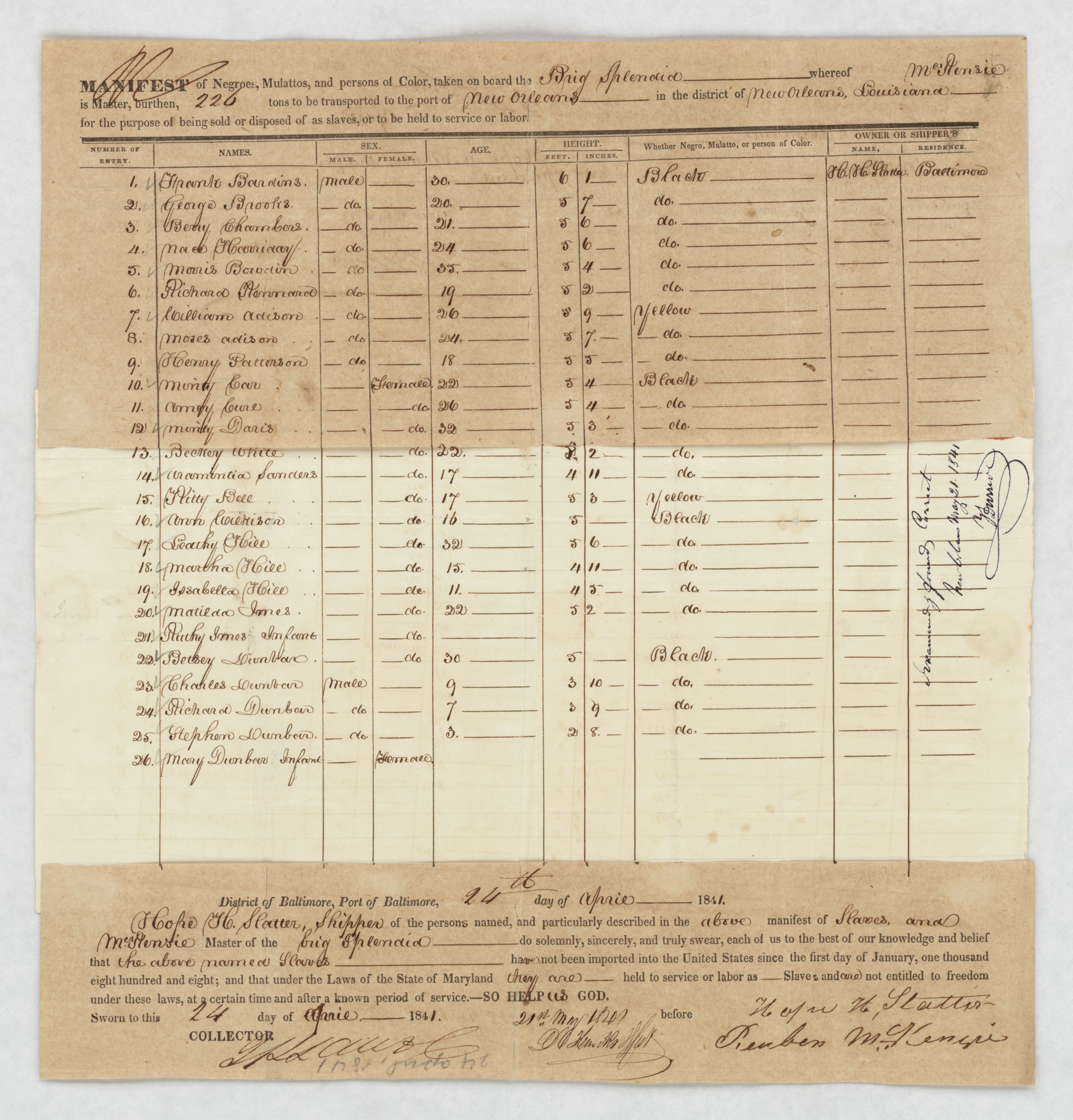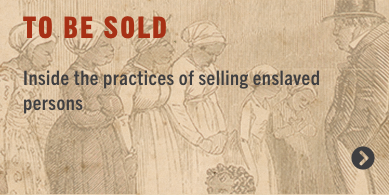In the six decades prior to the Civil War, roughly one million people were forcibly removed from their homes and families and sent to labor in the cotton and sugar fields of the Deep South. They came by steamboat and sail, stagecoach and railcar, but mostly they came on foot. For those bound for the New Orleans market, the overland journey often spanned many weeks and hundreds of miles. Chained together day and night, enslaved men led the coffle. Women and children followed, with the entire group of what might be hundreds of enslaved people overseen by slave drivers on horseback.
“The boat took on board, at Hannibal, a drove of slaves, bound for the New Orleans market. They numbered from fixty to sixty, consisting of men and women from eighteen to forty years of age. A drove of slaves on a southern steamboat, bound for the cotton or sugar regions, is an occurrence so common, that no one, not even the passengers, appear to notice it, though they clank their chains at every step.”
—William Wells Brown, from Narrative of William W. Brown, a Fugitive Slave, 1847For the more than seventy thousand people who traveled to New Orleans from Alexandria, Baltimore, Petersburg, Mobile, Richmond, Norfolk, Galveston, and other ports, the voyage has been likened to a second Middle Passage. Slave traders with operations based in coastal communities (such as Hope Hull Slatter, who was based in Baltimore) sometimes allotted less space per person belowdecks than captains of vessels that had made the transatlantic crossing from Africa in centuries past.
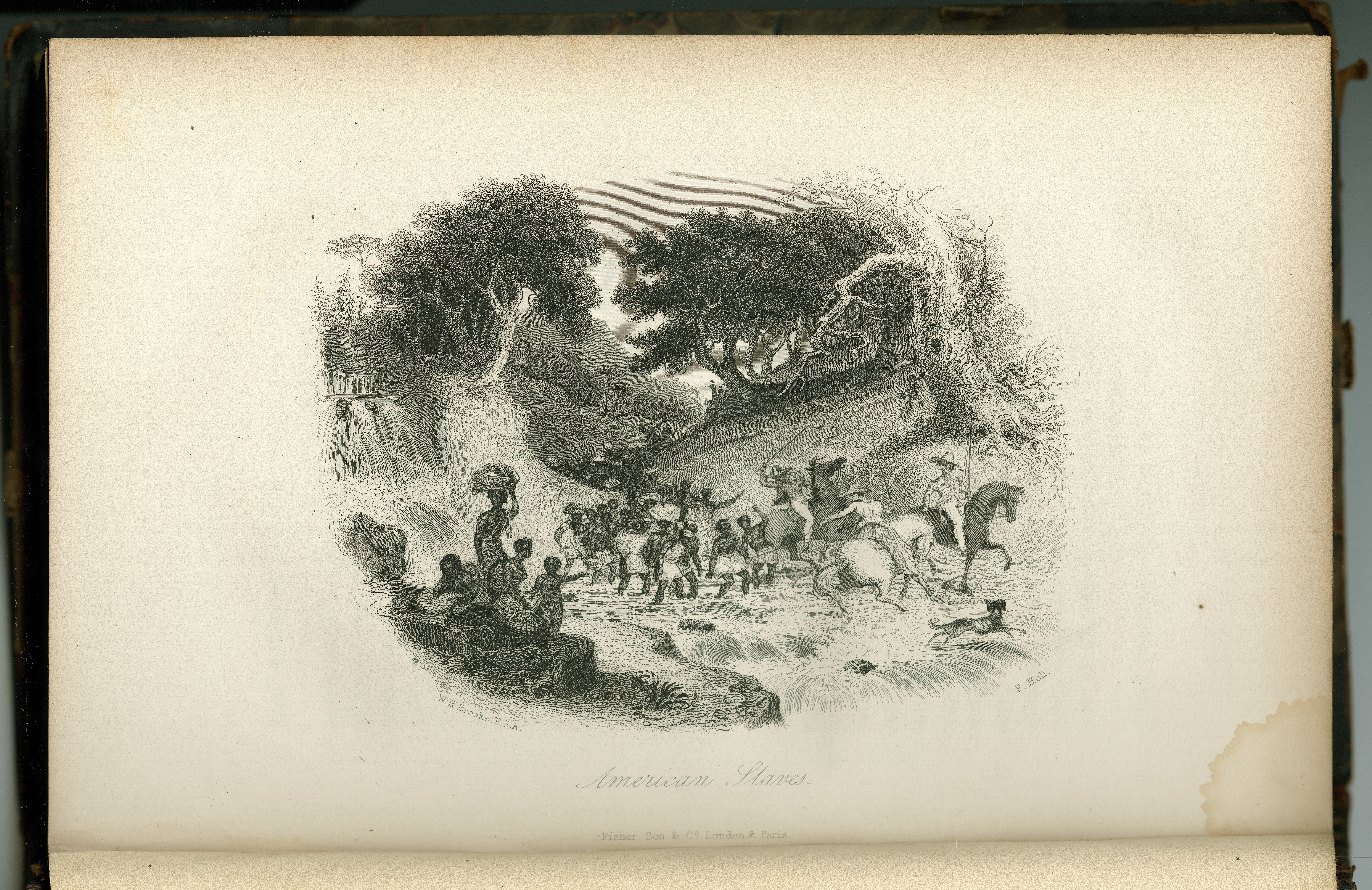
American Slaves
by William Henry Brooke, engraver
engraving from The Slave States of America,
vol. 2
London: Fisher, Son and Company, 1842
THNOC, 2014.0450.2
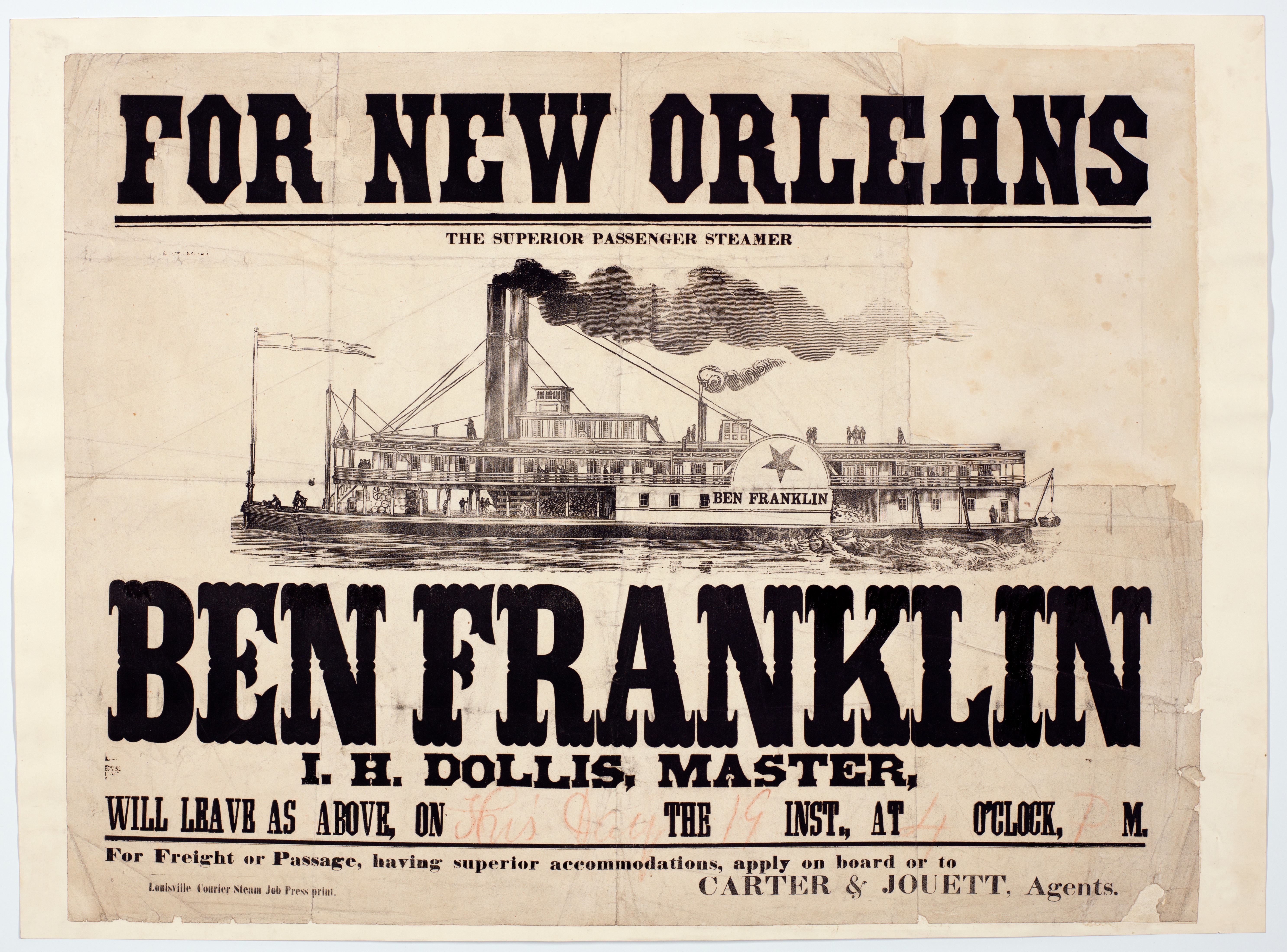
For New Orleans, the Superior Passenger Steamer Ben Franklin
between 1854 and 1858; letterpress with wood engraving
by Louisville Courier Steam Job Press, printer
THNOC, 1950.22
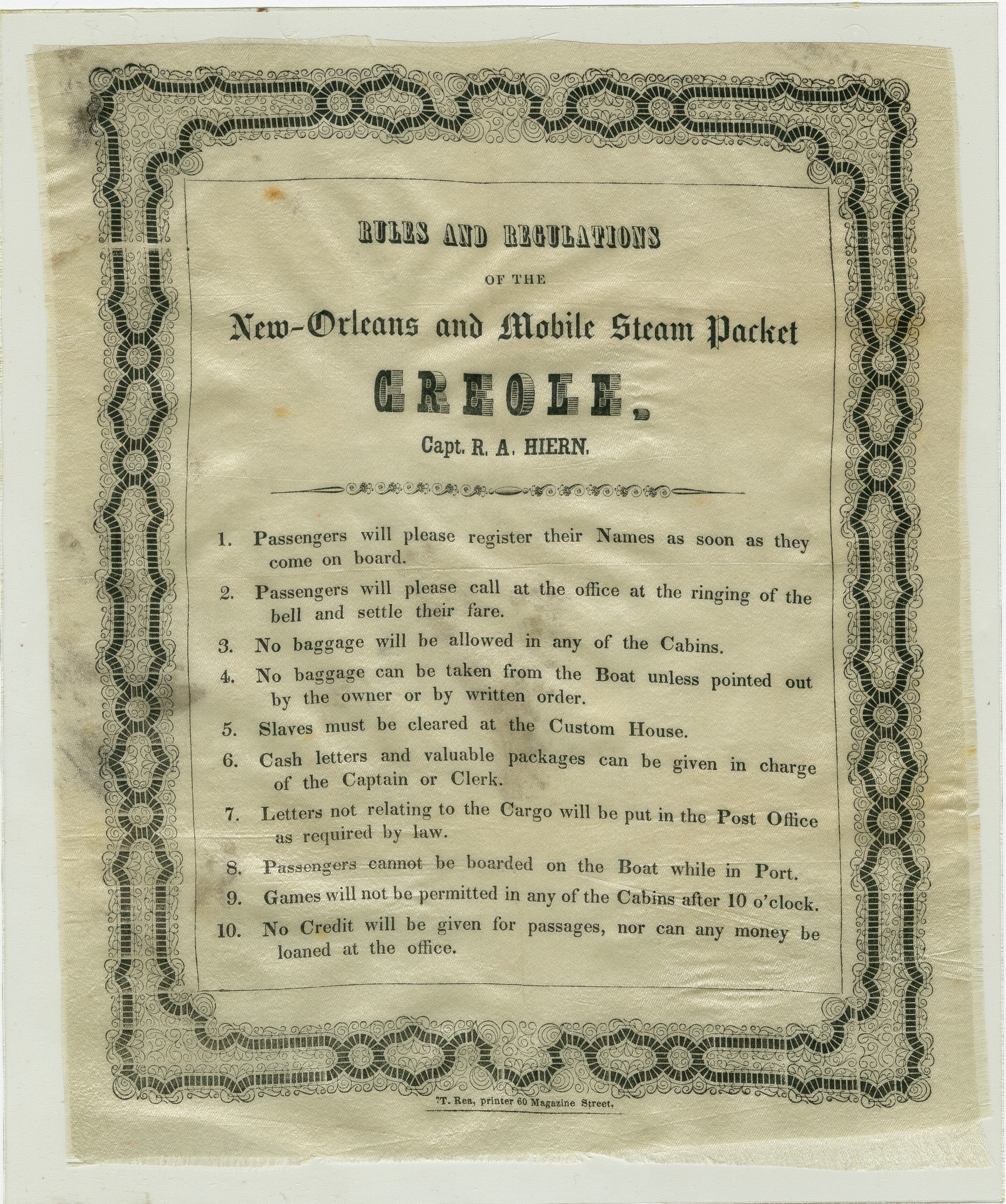
Rules and Regulations of the New-Orleans and Mobile Steam Packet Creole
between 1844 and 1846; printed on silk
New Orleans: T. Rea, between 1844 and 1846
THNOC, 2014.0451
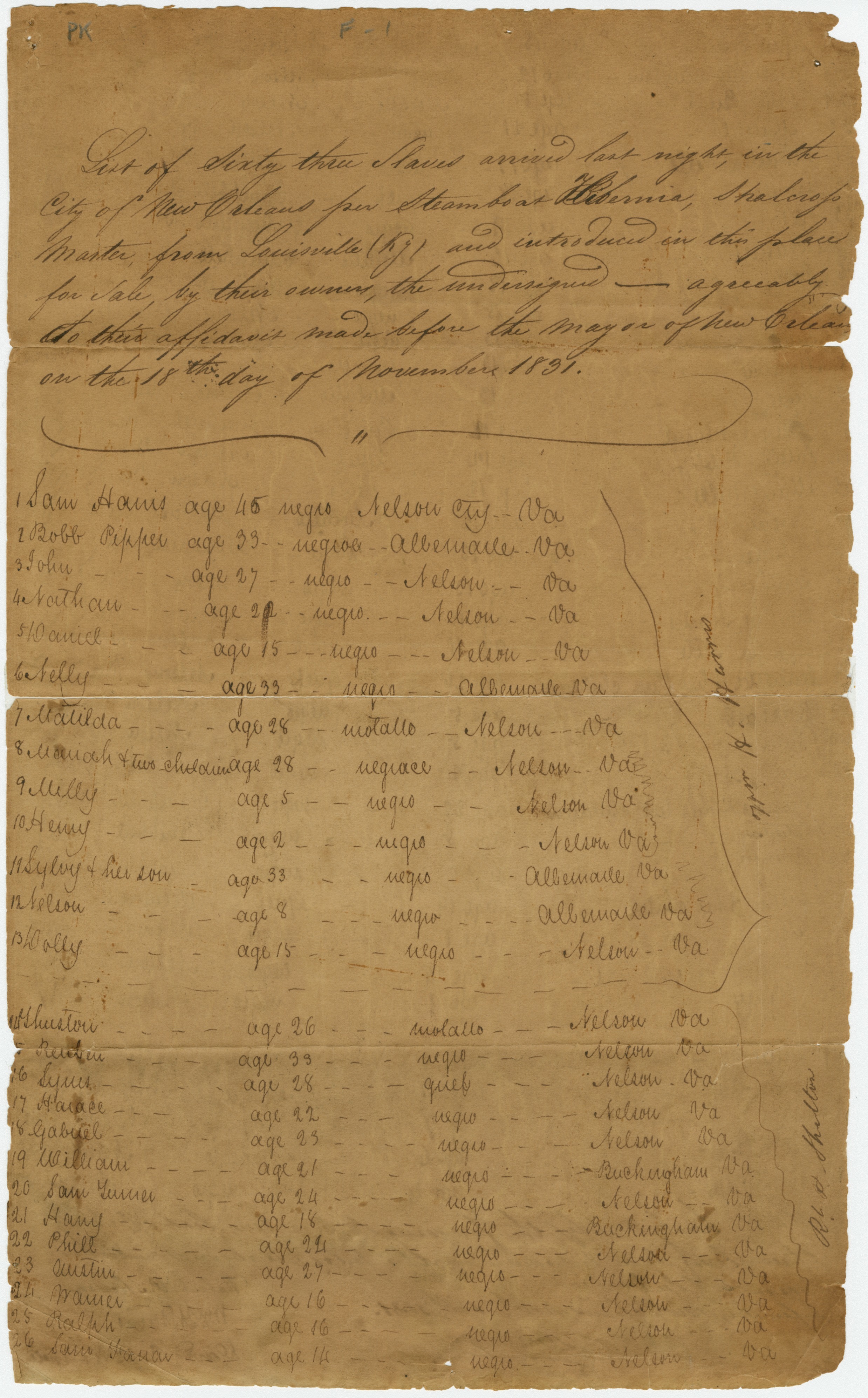
Certified list of sixty-three slaves shipped aboard the steamer Hibernia from Louisville to New Orleans (recto)
November 18, 1831
courtesy of the Louisiana State Museum, Historical Center, 09541, record group 68, gift of
J. C. MoitonClick here to see the entire document.

